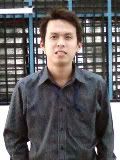♥ Wednesday, July 1

SINGAPORE: The Singapore Armed Forces (SAF) is looking at developing a potent, integrated Special Operations Task Force that will have capabilities to counter terrorist threats from land, sky and sea. This will comprise the SAF’s special operations forces, such as the Commandos and Naval Diving Unit.
The chief commando officer will be appointed commander of the Special Operations Task Force, while the commander of the Naval Diving Unit will be the Force’s deputy commander.
The chief commando officer will be appointed commander of the Special Operations Task Force, while the commander of the Naval Diving Unit will be the Force’s deputy commander.
This is part of the overall priority to build on the third generation Singapore Armed Forces.
The moves were mapped out in an interview with Deputy Prime Minister and Defence Minister Teo Chee Hean on Tuesday ahead of SAF Day, which is on Wednesday.
Transforming the SAF into a third generation force began in 2004. Five years later, Defence Minister Teo said the key building blocks of having a modernised networked force capable of a wider spectrum of operations and manned by well—trained and committed people are in place.
Mr Teo said: "The efforts to put this together is not just buying individual pieces of equipment but also exercising and training. So last year at Exercise Wallaby in Australia, I had the opportunity to see for myself our armoured forces working together with UAVs, the Apache Helicopters and the F16s all tied together as a cohesive package."
Mr Teo said that with the SAF now able to to conduct a wider spectrum of activities, it could also contribute to regional peace and stability besides carrying out its main mission of defending Singapore.
This has resulted in various operations such as the Malacca Strait Patrol together with the Eyes in the Sky initiative, a landing ship tank deployment in the Gulf of Aden and missions in East Timor, Afghanistan and Iraq.
Mr Teo stressed that a key element in the 3G transformation is homeland security, and that is where the new special operations command will help the men work together much more cohesively.
The Defence Minister added: "We develop special units in the Commandos and diving unit for distinct missions, but as you can see, many of these capabilities have much more integrated missions.
"You can go over land, over sea and you have much more integration in all the operations. So the things which you used to do separately, you now do together, a lot of them. So it makes sense to put together the very sophisticated capabilities of these two forces to give them the additional support that they need and this will allow us a good platform to develop their capability further.
"One of the Special Operations Task Force’s duties is is counter—terrorism — storming buildings, aircraft, ships and so on. The technologies and techniques of these things evolve quickly.
"They also have to deal with expanded threats. For example, we may no longer be dealing only with people with guns, but you may be dealing with people with very powerful explosives and various kinds of other substances such as chemical, radiological, etc.
"So you need to develop the capability to deal with these things and you’ll require quite specialised capabilities. You have to deal with them at sea, at shore, buildings and aeroplanes, on ships, coastlines and so on. So you do need to bring together these capabilities, develop them in a much more complete, coherent manner."
Every year, up to six per cent of national spending goes to defence.
Mr Teo added that the new systems that the SAF has acquired have enabled its servicemen to make better use of their time in training and it has created people structures within the organisation to develop and train personnel to fit its third generation needs. — CNA/vm
Published by: Raymond Lim
4/9 '10 loves x3 8:09 PM



